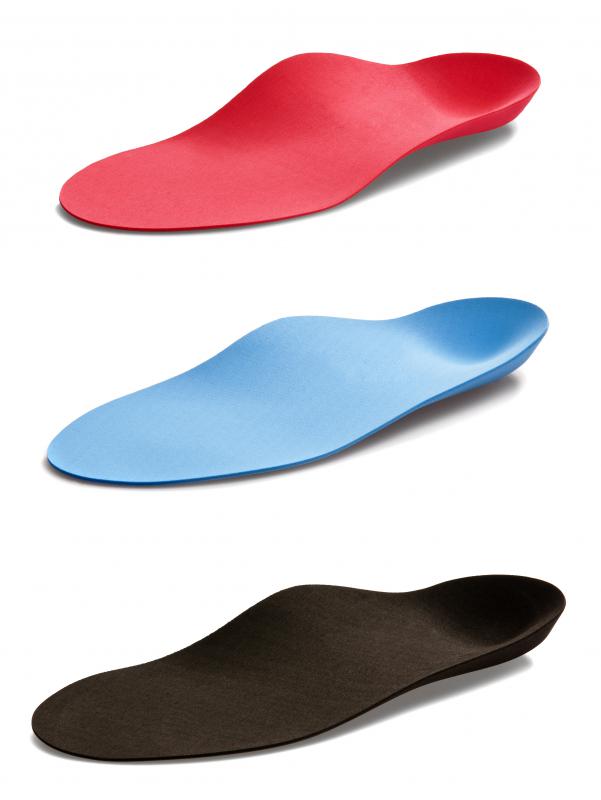At WiseGEEK, we're committed to delivering accurate, trustworthy information. Our expert-authored content is rigorously fact-checked and sourced from credible authorities. Discover how we uphold the highest standards in providing you with reliable knowledge.
How do I Choose the Best Running Shoes?
Choosing a comfortable and well-constructed pair of running shoes will go a long way toward improving your running experience and will help keep injuries at bay. The best running shoes will feature an appropriately supportive sole, breathable uppers, and lightweight materials. The biggest consideration is, of course, a snug fit that will prevent the foot from moving within the shoe — movement can lead to hot spots and blisters — and an insole that provides support to the arch of the foot. Some types of running shoes are activity-specific, however, and one type of running shoe may not be the best choice for a certain activity, such as cross training.
Runners generally run straight without moving side to side suddenly, as a sport-specific athlete might do. The best running shoes, therefore, do not necessarily need features that support side to side motions. The foot moves in a certain way when running forward, and a good running shoe will support this motion. The sole of a good pair of running shoes will flex with the foot, and it will provide cushion in the heel and in the ball of the foot. Good running shoes are also very lightweight to prevent the legs and feet from tiring too quickly.

Some runners require a shoe that provides lateral support. Cross training shoes are the best option in this case. If you are participating in any sport that requires forward and lateral movement, consider cross training shoes that provide support for forward motion as well as lateral movements. Such shoes often feature a sole that is stiffer than a normal running shoe, and the sole is also much wider to provide support when the foot moves sideways. The uppers are usually thicker and more supportive to keep the foot in place during lateral movements as well.

If your feet have pronation or supination issues — in other words, the feet are not situated in a forward position as they should be — then corrective insoles or corrective running shoes may be in order. Such shoes and insoles can help correct the running gait, improving the leg function and reducing pain or excess strain on leg muscles and joints. If you have these problems, consider talking to a professional trainer or a podiatrist to explore corrective footwear. Whatever shoe you choose, make sure the insole has adequate arch support, as this can help correct or improve the running gait simply and painlessly.
AS FEATURED ON:
AS FEATURED ON:

















Discussion Comments
@bythewell - I actually think it's worth it to just get custom made shoes if you can afford it. They will make them completely to your size of foot, both the length and the width, as well as ensuring that they have enough support or flexibility depending on your stride. And they let you chose the color scheme.
They seem to offer this every few months at my local sports shoes store and it's not all that much more expensive than just buying a pair of shoes. I don't know if the quality is as good, but it's done with one of the major brands I think, so it should be.
It just seems like this would be better than risking your feet with clearance running shoes, just because you can't find the right ones that will fit properly. Good running shoes are very important and can make a huge difference to a workout.
@Iluviaporos - I think there are some differences between male and female running shoes, but if it's a question of not being able to find your size, you are better off just going with the kind that fits you.
It's more important to make sure you've got supination running shoes, or pronation running shoes if you need them. That refers to whether or not you roll your feet while you run and in what direction and the right shoes will support you and stop you from hurting yourself.
I tend to be a bit too large in the foot for women's running shoes, so I usually get men's running shoes instead and it's never seemed to make much difference. I'm not sure if they are supposed to have a physical difference in their construction, or if it's just a matter of color choice. It might be a weight issue, but I'm about as tall as the average man as well, so I probably weigh about the same.
Post your comments